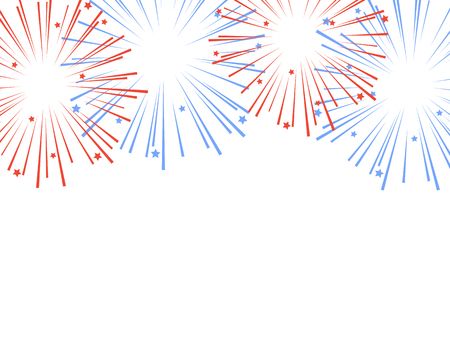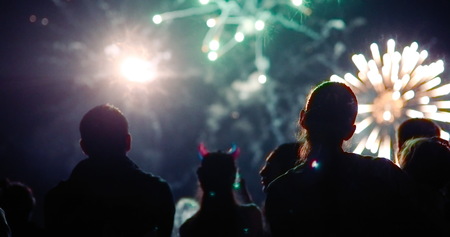Introduction: Royal Pageantry Meets the Celestial Sphere
The Queen’s Birthday Parade, widely celebrated as Trooping the Colour, stands as one of Britain’s most resplendent and enduring royal ceremonies. Each June, the broad avenues of London are transformed by the spectacle of scarlet-clad regiments, gleaming cavalry, and precise military choreography—a dazzling homage to the Sovereign that captures the imagination of citizens and visitors alike. Rooted in centuries-old tradition, this parade is not merely an expression of national pride or monarchical continuity; it is a vibrant tableau where history, symbolism, and pageantry converge in full British splendour.
Yet, beneath the polished boots and ceremonial banners lies a deeper tapestry woven through time—one that invites us to contemplate how the heavens themselves might cast their influence upon royal ritual. By examining Trooping the Colour through a zodiacal lens, we embark on an exploration that unites earthly grandeur with celestial rhythms. What might astrology reveal about the timing, symbolism, and significance of this most iconic of royal observances? In this article, we traverse both tradition and constellation, considering how the stars may illuminate our understanding of Britain’s cherished parade.
2. The Parade’s Celestial Setting: Timing, Season, and Astrological Context
The Queen’s Birthday Parade, more familiarly known as Trooping the Colour, is an event deeply woven into the fabric of British ceremonial tradition. Its annual occurrence in June is no mere accident of scheduling; rather, it is a convergence of royal custom and celestial significance. The timing of Trooping the Colour falls under the astrological sign of Gemini—a period that encapsulates duality, communication, and a vibrant exchange of energies. This zodiacal association brings a unique layer of symbolism to the event, harmonising the pageantry with the broader rhythms of the heavens.
June in Britain offers not only clement weather suited for public celebration but also marks a seasonal threshold. As late spring yields to early summer, there is an air of transition reminiscent of Gemini’s mutable nature. In astrology, Gemini is ruled by Mercury—the planet of intellect, connection, and movement—which resonates with the Parades themes of unity and coordinated display. The Parade itself becomes a microcosm of this mercurial spirit: regiments in precise formation, colours exchanged with ritualistic grace, and a nation brought together through shared spectacle.
The following table outlines key astrological correspondences relevant to Trooping the Colour:
| Aspect | Astrological Significance | Parade Reflection |
|---|---|---|
| Gemini (May 21 – June 20) | Duality, adaptability, communication | Diverse regiments unified; national dialogue through ceremony |
| Mercury (Ruling Planet) | Movement, coordination, intellectual clarity | Precision marching; meticulous choreography |
| Transition from Spring to Summer | Renewal, anticipation, communal energy | Ceremony as a renewal of loyalty and tradition |
This celestial context lends additional gravitas to Trooping the Colour. The alignment with Gemini not only marks a time of social interaction and collective purpose but also echoes throughout every detail—from the orderliness of military ranks to the sense of national identity on display. Thus, both astrologically and ceremonially, June proves an auspicious setting for honouring the Sovereign and reaffirming the bonds between Crown and country.

3. Star Signs on Parade: Allegorical Roles and Royal Archetypes
The Queen’s Birthday Parade, with its stately march and meticulously choreographed spectacle, unfolds as a living tapestry of tradition—one that can be intriguingly mapped onto the celestial language of the zodiac. Within this grand ceremonial pageant, the roles assumed by the monarch, members of the royal family, and regimental participants evoke the distinct virtues and mythic attributes of all twelve star signs, weaving astrological archetypes into the very fabric of British pomp.
The Monarch as Solar Centre: Leo’s Regal Luminance
At the heart of Trooping the Colour stands the sovereign, embodying not merely hereditary authority but also radiating a solar presence reminiscent of Leo, the lion. As the sign ruled by the Sun, Leo denotes leadership, courage, and magnanimity—the very qualities that resonate through Her Majesty’s poised review of her troops. The monarch’s central placement in both ceremony and national consciousness mirrors Leo’s astral dominance, making this role an earthly echo of royal constellations above.
Royal Family Members: Astrological Diversity in Unity
Flanking the monarch are other royals who, together, present a cosmopolitan assembly reflective of multiple star signs. The steadfast composure of senior princes may call to mind Taurus’ enduring loyalty; meanwhile, younger royals engaged in charitable causes echo Aquarius’ humanitarian spirit. Each participant brings forth their personal blend of traits—be it Cancerian devotion to family or Aries’ bold initiative—thus transforming the royal balcony into a zodiacal tableau vivant.
Regiments: Martial Energy and Celestial Order
The regiments themselves, with their disciplined formations and vibrant standards, serve as terrestrial analogues to Mars-ruled Aries—assertive and martial—but also Virgoan precision. Their ritualised movements reflect not only military prowess but also cosmic order; each step is as methodical as Saturn’s orbit. The synchrony between units parallels Libra’s quest for balance and harmony, while their collective might channels Scorpio’s intensity and Scorpios unwavering focus.
Zodiacal Resonance in Ceremonial Roles
Beyond individual attributes, the interplay among these roles enacts a subtle astrological dance. The regal Leo centre draws upon Taurus’ reliability (household cavalry), Gemini’s communicative flair (heralds and announcers), Sagittarius’ grandeur (the ceremonial display), and Capricorn’s respect for tradition (parade marshals). In this way, Trooping the Colour becomes not just a public celebration but an annual re-enactment of cosmic principles—a pageant where every participant embodies a star sign’s symbolic legacy within Britain’s enduring royal narrative.
4. Ceremonial Colours: Palette, Pageantry, and Planetary Correspondences
The resplendent regimental colours that define The Queen’s Birthday Parade—vivid banners unfurled amidst the Horse Guards Parade—hold a significance far beyond their visual splendour. Each flag is not merely a marker of military identity, but an artefact steeped in centuries of British tradition and celestial symbolism. To the discerning eye, the palette of scarlets, golds, blues, and greens is more than decorative; it is a carefully woven tapestry reflecting ancient planetary associations and zodiacal archetypes embedded within the nation’s lore.
Historical Context of the Regimental Colours
The origins of “trooping the colour” trace to battlefield necessity: colours were carried as rallying points for troops amidst the smoke and confusion of war. Over time, these banners became repositories of regimental honour, each one bearing battle honours and emblems unique to its corps. The ceremony itself transforms this martial heritage into living pageantry, where each hue and motif resonates with historic depth.
Celestial Symbolism in Colour and Design
In British astrological tradition, colours have long been attributed to planetary rulers and zodiac signs—a correspondence echoed in the regimental standards. For instance, scarlet red recalls Mars (the planet of courage and war), fitting for the martial context of the parade. Gold embroidery invokes the Sun’s regal authority, blue reflects Jupiter’s wisdom and justice, while green may allude to Venusian harmony or even Mercury’s adaptability depending on the regiment. These correspondences create a cosmic alignment between earthly ceremony and celestial order.
Table: Regimental Colours and Their Astrological Correspondences
| Regimental Colour | Primary Hue | Planetary Ruler | Zodiac Association |
|---|---|---|---|
| Infantry Standard | Scarlet Red | Mars | Aries/Scorpio |
| Cavalry Guidon | Royal Blue | Jupiter | Sagittarius/Pisces |
| Artillery Banner | Gold/Yellow | Sun | Leo |
| Rifle Regiment Colour | Green | Venus/Mercury | Taurus/Gemini/Virgo |
| Household Division Standard | Purple & Gold Trim | Sun & Saturn (balance) | Aquarius/Leo (Royalty) |
The Interplay of Pageantry and Cosmos in Trooping the Colour
This chromatic symphony is more than pageantry; it is ritual theatre wherein every officer, guardsman, and ensign becomes an actor upon both terrestrial and celestial stages. The arrangement of colours on parade mimics planetary procession—each regiment orbiting around sovereign authority like planets around the Sun. Through this ancient interplay of symbolism, Britain’s royal ceremony reaffirms its cosmic alignment with tradition, order, and destiny.
5. Public Pageant, National Identity: The Parade’s Significance Through Astrological Eyes
To observe Trooping the Colour is to witness a grand spectacle that weaves together pageantry, heritage, and unity—each element resonating with the British spirit. From an astrological perspective, the parade’s enduring appeal rests not only in its visual splendour but also in its symbolic alignment with the cyclical rhythms of the cosmos. Just as the planets trace their orbits, so too does Britain mark time by this annual ritual, reinforcing a collective sense of identity rooted in both tradition and celestial order.
The parade occurs in June, under the sign of Gemini—a period astrologically associated with communication, duality, and adaptability. This timing subtly reflects the United Kingdom’s own multiplicity: a union of nations, voices, and histories harmonised beneath one banner. The ceremony becomes a microcosm of national dialogue, echoing Gemini’s mercurial essence by fostering both continuity and renewal within public consciousness.
Beyond astrological symbolism, Trooping the Colour serves as a living embodiment of British values: discipline mirrored in military precision, loyalty embodied by subjects gathered along The Mall, and unity expressed through shared celebration. Much like the reliable return of celestial bodies to familiar positions in the sky, this event reassures citizens with its reassuring regularity—even amidst political or social uncertainty.
In aligning itself with cosmic cycles—marking the sovereign’s official birthday regardless of their actual date—the parade transcends mere ceremony. It draws upon ancient traditions of marking time by star and season, acting as a temporal anchor for the nation. Through this lens, Trooping the Colour is not simply a display for tourists or loyal subjects; it is a ritual that synchronises individual experience with national destiny and universal rhythm.
Ultimately, viewing Trooping the Colour through astrological eyes reveals its deeper function: it is both a mirror and a metronome for British identity. Like the zodiac’s wheel ever turning above us, this yearly pageant binds past to present, monarchy to people, and earthly customs to celestial order—reminding all who attend or observe that they are part of something far larger than themselves.
6. Conclusion: Reflections Beneath the Royal and Celestial Banners
The Queen’s Birthday Parade, or Trooping the Colour, serves as a living testament to Britain’s enduring relationship with tradition—a ceremony where pageantry is interwoven with deep-rooted symbolism. When viewed through the astrological lens, this regal procession transcends its temporal context and resonates with celestial meaning, reflecting not only the nation’s history but also its cosmic orientation.
Tradition and Cosmic Order United
As each regiment marches in precise unison, they echo the harmonious movement of celestial bodies—planets and stars performing their eternal dance across the sky. The parade’s meticulously orchestrated sequence mirrors the cycles of the Zodiac: order within apparent complexity, discipline amidst grandeur. Such parallels suggest that British ceremonial life draws strength from both earthly heritage and an ancient awareness of cosmic rhythm.
Symbolism Woven Through Ceremony
The banners, uniforms, and regalia displayed on Horse Guards Parade are not merely decorative; they are imbued with archetypal significance. Colours representing elements—scarlet for fire, gold for the Sun—find their astrological counterparts in Leo’s pride and Aries’ martial vigour. The presence of these symbols anchors the monarchy within a web of mythic associations, reinforcing its role as a focal point for national identity under both terrestrial and celestial banners.
Reflections for a Modern Age
In synthesising these astrological perspectives, it becomes clear that Trooping the Colour is more than a spectacle; it is an annual reaffirmation of unity between people, crown, and cosmos. As Britain navigates the tides of change, such ceremonies remind us of our place within broader cycles—where tradition offers continuity and astrology invites contemplation. Under the watchful gaze of both sovereign and stars, British ceremonial life endures as an interplay of history, symbolism, and celestial observation—a dance as old as time itself.


